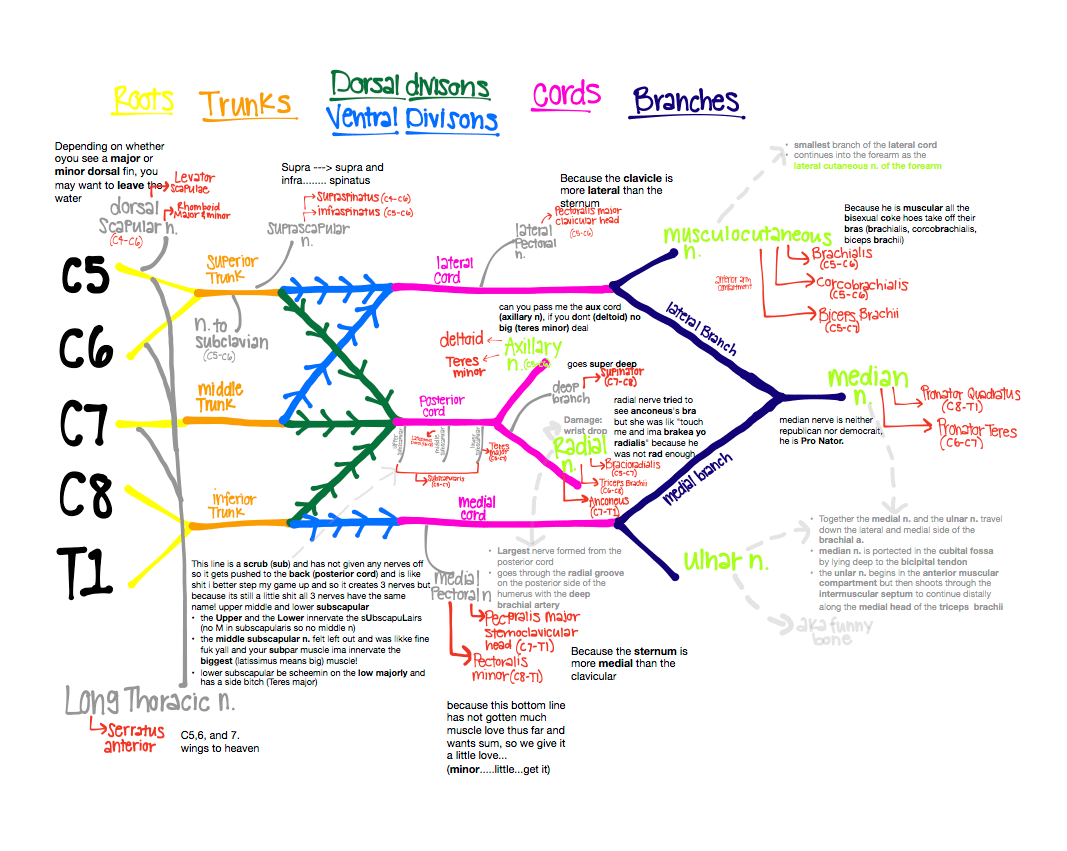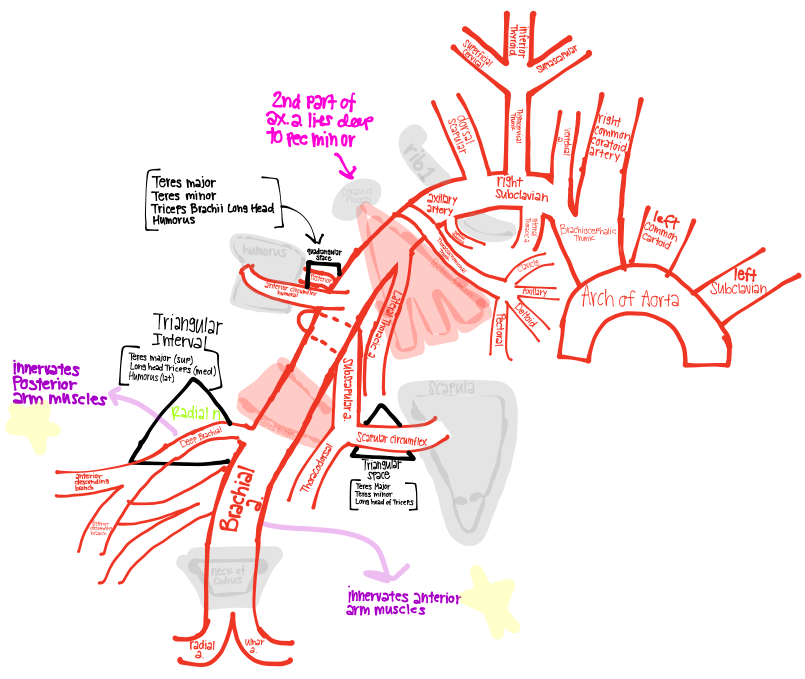The Dyslexic Experience: How Kim Got an A in Anatomy!

Physical Therapy student, Regis University, Denver
For students, anatomy is a subject of both fascination and dread. Not only does it bring up the matter of dissecting a human body, but also a whole new set of details to memorize. Just one look at the thick stack of textbooks in the library has you resigning yourself to an existence of cramming for the next few years of study.
Now on top of all this pressure, what if you had dyslexia, too?
Perhaps the traditional study methods would cease to be relevant or applicable. You might have serious difficulty reading or you might not be able to easily memorize things.
Such was the story of Kim Bengochea… until she found Kenhub! With it, Kim was able to pass Anatomy with straight A’s in spite of her dyslexia. And now? Now Kim is on her way to become a pediatric physical therapist.
Have dyslexia and wondering about how to get an A in anatomy?
Here’s what Kim had to say about struggling to learn anatomy when you have dyslexia.
With my learning "disorder" I have been blessed by the curse of not being able to memorize. I have never been able to just simply remember something for a test. I need to truly understand to learn something. During undergrad this meant that I had to do all of the textbook readings. These readings gave me context and enabled me to understand the material in its entirety, rather than random bits to be memorized.

In DPT school, I have no time to read textbooks that are superfluous and need that added level of explanation to truly master the material (which is what grad school is all about, right?).
I have, because of my dyslexia, been in tutoring my entire scholastic career and I respond very well to tutoring because I am highly intelligent - I just need it explained in its entirety. But all of a sudden when you yourself are a doctoral student, it is hard to find an adequate tutor.
So, how did Kim tackle anatomy?
With a mix of creative doodling and Kenhub’s audio-visuals!
Since reading is just not as effective for her, she has found a way to master anatomy using Kenhub’s audiovisual tools like videos, quizzes and HD atlas and then doodling out her learning.
Here is what this creative doodling looks like:


Human anatomy is so visual that the pairing of the pictures while talking about the structures only makes sense! The visual aspect of Kenhub is hugely important for anyone but especially someone with dyslexia whose strength is visual and spatial memory.
Kim’s anatomy learning routine looked something like this:
Watch a Kenhub video
Refer to her anatomy class notes
Doodle out her learnings
...Say hello to straight A’s in the anatomy exam!

What Kenhub has done is essentially given me an e-book. I know that I can log onto Kenhub and "read a chapter" aka watch a video in about 30 mins and be done with that material. The videos are detailed and clear and they discuss everything I need to know.
I have paired these Kenhub videos with my class notes and have combined these two into one visual representation of my notes on notability. I call it creative doodling. I have found that when you watch, listen, and draw you really cement your learning.
Kenhub is like a tutor for me. I can pause the videos, take notes, doodle, and learn it all just like someone is explaining it to me, as a tutor.
And this style of learning seems far more intuitive for students who are largely occupied with the smartphone, social networks and high definition movies.
Why should studying Anatomy still be limited to textbooks?

Not only do multimedia learning tools alleviate the monotony of studying only via notes or textbooks, but multimedia interactive revision has been proven to be more effective than singular format studying. After all, there’s no denying that learning with video tutorials, doodling, taking revision quizzes and having access to HD illustrations sounds like a lot more fun.
Another aspect of Kenhub I have benefitted from is the fact that all the names are said out loud. Having dyslexia, I am never really confident on how to say all of these anatomical terms. So hearing someone say it out loud first gives me the confidence and ability to correctly say the terms to my peers.
If you are still wondering whether this study method is for you, we can only suggest that you try it out!
Kenhub in Review

Finally, here is what Kim has to say to dyslexic students struggling with anatomy learning.
Kenhub is well worth the money! It even allowed me not to have to buy the class textbook (which was around $300). The videos made studying for anatomy far less miserable. The audio and visuals helped to really reinforce the knowledge. The quizzes were also very helpful to help me gauge where I was at and where I needed more focus. I really liked how the quizzes focused on what needed more attention. I would honestly say that Kenhub cut my study time in half; it was a much more efficient way to learn anatomy for me than just looking at static pictures and struggling over how to correctly pronounce words.
Thanks for sharing your story, Kim.
More power to all dyslexic students out there to keep going. If you are struggling with your anatomy studies, let this be a reminder that you can do this! Figure out your own creative methods to crack anatomy, and don’t let yourself get bogged down by all of the challenges. Not only can you pass the exams, but you can be a straight A grade anatomy student, too.
Would YOU like to share your story of how Kenhub helped you to learn anatomy? Get in touch!
If you want to supercharge your anatomy learning and boost your grades just like Kim, be sure to register for your FREE Kenhub account today. Our quizzes, articles, videos, atlas AND anatomy geeks are here to guide you through your anatomy education every step of the way.
Keep reading success stories
Why should you care about Kenhub Premium? Because with it, you could be successful at anatomy, too.

Kiron K.
2nd Year Medical Student, Masaryk University, Czech Republic
Read more

Osman Elmais
2nd year Dental Medicine student, Medical University of Varna
Read more

Erin Kirby
Pre-Nursing student, Olympic College
Read more

Tracey McNamara
Bachelor of Health Science student, Australasian College of Natural Therapies
Read more

Alexandra Orfanides
3rd year Osteopathy student, The University College of Osteopathy, London
Read more

Tyler Kyle
Yoga Instructor in Napa, California
Read more

Eric Fajardo
Athletic Trainer, Montwood High School, El Paso, Texas
Read more